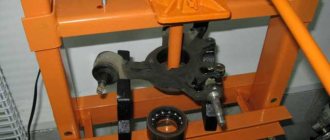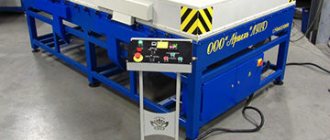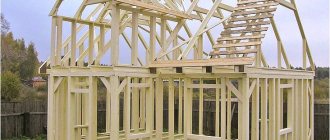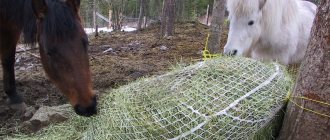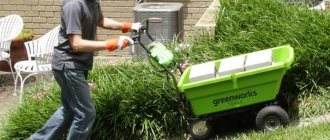When preparing hay for livestock, you need to make sure that it is convenient to store. There are different ways.
The simplest one is to pile a haystack of the required height and cover it with film on top (to protect it from rain and snow). However, this method is mainly suitable for storing hay outside.
To be able to store hay in a barn or other storage facility, you need to make bales of the appropriate size. This is done by pressing - using a simple device (press).
We also advise you to read: how to remove a piece of metal pipe tightly driven into the ground without much effort. Read more about this here.
Tools and materials
To make a press with your own hands you need:
- standard set of carpentry tools;
- welding machine and related materials;
- metal profiles, pipes;
- wooden beams, slats;
- rubber and fabric;
- mounting bolts;
- folding or door hinges;
- leg-split.
Among the ready-made mechanisms you will need:
- gearbox;
- Transmission;
- gears;
- rollers;
- pneumatic wheels.
How does the assembly work?
Before you make a homemade hay baler, you need to understand the principle of its operation. The equipment operates from a mini-tractor or walk-behind tractor to which it is attached. It captures and collects the mown crops and natural crops and directs them to the pressing chamber. Under the influence of technological rolling pins and grids, the hay is rolled into rolls or bales and wrapped with twine.
Upon completion of the process, the twine is cut, hydraulic lifts open the chamber, and the roll is unloaded onto the ground.
Balers are divided into 2 types:
Roll units produce cylindrical rolls at the output, while bale units produce small rectangular briquettes.
Homemade devices are made in 2 versions:
Stationary pick-ups do not pick up hay in the fields; they are installed on stands or supports. Mobile presses are designed for picking up straw windrows when working with a mini-tractor or walk-behind tractor. They are assembled using an adapter hitch and move on wheels. Most often, craftsmen make roll machines mobile and bale machines stationary.
Roll type
Factory balers for walk-behind tractors have a complex design. It is almost impossible to replicate the device in a workshop environment. Therefore, often the binding apparatus is not installed on the press; the rolls are not so dense.
Instructions for making and assembling a round baler with your own hands look like this:
- Assembling the chassis. To do this, use a frame structure, pre-made of metal pipes to install the base and all components of the machine, attach 2 pneumatic wheels for movement across the field. For frame stability, you can install 4 wheels:
- 2 front ones - small diameter, for example from a trolley;
- The 2 rear ones are larger.
- A front face is installed at the front for attachment to the traction unit.
- A pick-up and a 2-layer transport belt are mounted on the frame; the top is made of rubber, the bottom side is made of a fabric lining.
- The press chamber is manufactured separately. A dense board or steel plate on a stiff spring is placed on the upper part for compaction, and rollers and a grid pressing the hay are placed on the lower part.
- The cardan shaft is connected to a 2-speed gearbox to drive the working parts.
- To increase the speed of picking up the rollers and the pressing speed, the gears on the rollers are selected with a smaller diameter than the gears of the device.
When working with a walk-behind tractor, the best result will be obtained by dividing the technological process into 2 stages - the vegetation is collected separately with a walk-behind rake, then pressed manually or using an electrical device.
Bale type
The simplest bale press is a product made of box-shaped wood, rigidly mounted on a frame made of thick timber or metal profiles. For manufacturing, planed boards are used, and they are fastened together with bolted steel corners. For structural strength, the upper and lower parts are reinforced with metal slats, padding around the perimeter. On one side of the box there is a door on hinges for feeding straw.
A structure made of a large beam with 2 parallel boards and a beam that rotates half a turn with a press sole at the end is attached to the back of the box. Place a spool of twine or synthetic twine in a convenient place. On the hinged door, 2 narrow grooves are made for bale bundles.
Homemade hay roll with drawings and dimensions
This device facilitates the work of collecting and packing hay and straw when storing them for the winter. The roll machine mechanizes it and speeds it up in time, which is important especially at the end of summer, when it often starts to rain in the regions. As a result, straw and hay are rolled into tight rolls.
Buying a factory roll today is not a problem. They are produced in a trailed version for mini or conventional tractors. If the farm uses a walk-behind tractor, then such a unit is not suitable. You can order it from craftsmen, if you have some skills it’s easy to do it yourself.
As a result, they end up with a homemade roll that does the job perfectly. With its help, windrows of dried hay are quickly collected in the meadow, compressed and rolls are obtained, which are easier to transport and store.
The design of a homemade home roll consists of:
- A frame used for mounting component parts and components; a front is installed on it for attaching to a walk-behind tractor;
- Chassis, including a rigid base for placing the press box; it is made movable by equipping it with a pair of wheels;
- A pick-up machine for collecting rollers from the surface of the meadow; it uses a conveyor belt that supplies hay to the pressing and twisting unit;
- Housing chamber: it has a cylindrical shape, there is a press powered by a cardan transmission; the unit is equipped with rollers and grids used for pressing hay; It has a spring loaded molding metal plate.
The assembly of a home roll includes the manufacture of a chassis, which consists of a base supported by pneumatic wheels. The base is equipped with a header and a pick-up, including a conveyor belt.
The box and press are assembled into one unit. Closer to the bottom of the box, rollers and a grid are placed, which will ensure that the incoming hay is pressed against them. In the upper part, through the spring, a pressure plate is installed. Its task is to press the layer of compressed straw in the area where it is fed to the rolling mechanism.
Next we deal with the drive. Install a 2-speed gearbox. It is connected by a cardan shaft to a walk-behind tractor and a chain drive with rollers driving the conveyor belt. The pick-up is equipped with a toothed gear, and rotation from the rollers is transmitted to it. The diameter of the gear is usually larger than the diameter of the rollers - this ensures faster rotation of the pick-up.
It is possible that a roll maker made independently will not satisfy the quality of the rolls coming out of it. The solution is to divide the work and first collect the grass using, for example, a walk-behind rake. Then press.
Do-it-yourself roll press for a walk-behind tractor
Commercially available balers are usually designed to work with a tractor - regular or mini. However, for small business owners who have only a walk-behind tractor in their arsenal, this is not always convenient - a walk-behind tractor system is often not able to pull a bulky device and provide it with sufficient energy for full operation.
Purpose
The hay-straw roll baler is used to perform the full cycle of assembling and packaging hay or straw, providing fairly high quality results:
- A selection of dried hay from windrows in the field;
- Pressing a selection of dry plant mass;
- Simultaneous twisting of the pressed fabric into a roll.
Photo of a homemade roll baler
Advantages and disadvantages
The roll hay collection unit with a press is the most popular among other similar equipment. Choosing exactly this type of picker for making it yourself will ensure:
- Initially, the ease of setup provided by the simplicity of the machine design.
- The work involves gentle baling without deformation or crumbling of the plant mass.
- The ability to create hay bales of minimal size that can be easily carried and stored by one person.
- The subsequent convenience of storing and using the resulting hay rolls.
Types of mowers for walk-behind tractors
You can effectively mow the grass in large areas, make hay, tidy up a large lawn, and clear an area of weeds using a walk-behind mower. The operating speed of the device depends mainly on the capabilities of the walk-behind tractor itself. There are two main types of mowers - rotary and segmented, each of which has its own pros and cons.
Rotary versions of mowers for walk-behind tractors are more popular . Their main advantage is their effective work on surfaces with complex terrain, in areas with tall grass, dead wood, and weed thickets. Rotary mowers are an excellent way to cut grass for hay with minimal maintenance. A significant disadvantage is the inability to mow the lawn with a rotary mower due to the lack of grass cutting height adjustments.
Segment mowers for walk-behind tractors only work well on flat areas; the slightest obstacles can cause serious damage. Tall grass can also interfere with normal operation.
Thus, when choosing the type of mower for a walk-behind tractor, you should, first of all, proceed from the task that the owner has defined for himself. Segmented models are suitable for performing the functions of a lawn mower; for haymaking and working on difficult surfaces, the only option is to purchase a rotary mower.
Technically trained, advanced owners make unique homemade mowers for walk-behind tractors with their own hands. Of course, homemade devices have different characteristics than factory models.
Rotary mowers
The design of rotary (disc) mowers for walk-behind tractors is simple: cutting discs - one, two or three - are installed on the frame. Based on the connection method, rotary mowers for walk-behind tractors are divided into three groups:
- mounted – attached to the back;
- trailed or frontal - installed in the front part of the walk-behind tractor;
- semi-trailer - mounted on the side.
When choosing the required mower model, you should focus on the power of the walk-behind tractor or cultivator. The windrow cut by a two-rotor mower is folded in the center between the wheels. A single-rotor mower forms a windrow on one side of the walk-behind tractor.
Rotary mower for walk-behind tractor
The rotary mower for the walk-behind tractor is not afraid of obstacles - in the event of obstacles, thanks to the special design, the blades fold under the discs.
Materials
The round pick-up consists of the following main parts:
- The windshield, which is the basis for the installation of all components and the fastening element to the draft unit.
- Chassis with a base for a press chamber on 2 wheels on which the device moves across the field.
- A pick-up machine with a conveyor that collects a mass of hay or straw from the field.
- Cylindrical chamber-casing with a pressing mechanism.
- Cardan drive with speed-increasing mini-gearbox.
The video shows how to make a bale press with your own hands:
At the same time, it is desirable that the tractor itself - the basic walk-behind tractor - be as powerful as possible in order to ensure the required rotation speed of the rollers and the productivity of the pressing device.
Review of balers for walk-behind tractors
With the help of a roll or bale press, the pick-up greatly facilitates the collection of dried grass and straw on the field, packaging it into dense rolls, bales, which can easily be taken away from the field and stored in the required place. Square balers press the dried mass into rectangular blocks. The roll baler forms packages of small compact sizes.
Various models of balers have been developed that are driven by a belt drive without additional modifications. The baler for a walk-behind tractor or cultivator has more compact dimensions - mini than for large productive tractors, designed for the average productivity of a walk-behind tractor. Depending on the design of the baler and motor-cultivator, the device can be mounted in the front or rear part of the walk-behind tractor.
Step-by-step instruction
Sequential assembly of a homemade hay baler to a walk-behind tractor will make installation work easier and done with the highest quality. To independently create a convenient baler for your home walk-behind tractor, you will need to complete several stages of work:
- You need to start by assembling the chassis - the base on a pair of pneumatic wheels.
- A header and a pick-up with a conveyor are installed on it.
- A press chamber is mounted separately, in the lower part of which rollers and a pressure grid are installed, and in the upper part there is a plate on a spring, which will press the compressed layers for more dense winding of the roll.
- Next, we assemble the drive that gives movement to the working parts of the machine - we connect the cardan to a 2-speed gearbox, from which a chain drive will go to the rollers and the pick-up conveyor.
- On the mechanism of the hay picking device, we install gears of a larger diameter than on the rollers in order to increase the picking speed and the force of simultaneous compacting.
If you need to obtain better results when collecting hay with a walk-behind tractor, you can use a simpler and longer-term, but effective option - dividing the work into collecting grass mass with a walk-behind rake and pressing it with a separate manual or electrical device. In the video, a homemade pick-up press made by yourself:
Rake for walk-behind tractor, review and types
Everyone is well aware of the agricultural tool - a rake, with which you can collect leaves, roots, weeds, hay, and cultivated plants. According to the method of use, rakes can be manual, horse-drawn and mechanized (rakes for walk-behind tractors or tractors).
Mechanized rakes for walk-behind tractors are used to facilitate work that can be done with hand tools. Rakes are distinguished by purpose: regular rakes and tedder rakes, which are used to turn hay for better drying. The rake for the walk-behind tractor is installed on the adapter or the walk-behind tractor itself.
Manufacturers offer several models of rakes and tedders.
- Centaur Solnyshko GVR-4 – turn over the hay and rake it into the drag.
- Mechanical rakes - mounted on an adapter and adjusted with a special handle.
- Mechanical rake Solnyshko - allows you to quickly remove mown grass.
- Damask steel rake Solnyshko with a different number of wheels.
- Bulat 2M - the rake is equipped with removable rods.
- Damask steel 1.2M - designed for raking various debris, equipped with a universal hitch.
- DTZ 9GL-1.8 – used for cleaning and clearing large areas, equipped with a hydraulic drive.
- Husqvarna moss rake - for raking the remains of dry grass from the lawn.
You can watch how to make a homemade rake for a walk-behind tractor with your own hands in an interesting video:
Do-it-yourself roll press for a walk-behind tractor
Commercially available balers are usually designed to work with a tractor - regular or mini. However, for small business owners who have only a walk-behind tractor in their arsenal, this is not always convenient - a walk-behind tractor system is often not able to pull a bulky device and provide it with sufficient energy for full operation.
Purpose
The hay-straw roll baler is used to perform the full cycle of assembling and packaging hay or straw, providing fairly high quality results:
- A selection of dried hay from windrows in the field;
- Pressing a selection of dry plant mass;
- Simultaneous twisting of the pressed fabric into a roll.
Photo of a homemade roll baler
Advantages and disadvantages
The roll hay collection unit with a press is the most popular among other similar equipment. Choosing exactly this type of picker for making it yourself will ensure:
- Initially, the ease of setup provided by the simplicity of the machine design.
- The work involves gentle baling without deformation or crumbling of the plant mass.
- The ability to create hay bales of minimal size that can be easily carried and stored by one person.
- The subsequent convenience of storing and using the resulting hay rolls.
Drawing of a homemade hay baler with your own hands
1- frame; feeding conveyor; 3 - rollers; 4 - anterior chamber; 5, 6, 7 — working conveyors of the anterior chamber; 8 - pressing chamber; 9 — belt working element; 10 — tension device; 11 — pressure sensor; 12 — flashing device; 13 — supporting weights; 14 — support rollers; 15 — driving drum; 16 — press chamber body; 17 — support rollers; 18 — electric motor; 19 — safety clutch; 20 - gearbox. With homemade work, it is almost impossible to 100% replicate the complex design of factory pick-ups, which, even with a reduction in size, require a tractor power of at least 16 - 20 hp. Therefore, a binding apparatus is usually not installed in it, and the roll may not be so dense.
Review and types of mowers, lawn mowers and trimmers for walk-behind tractors
Many owners of personal plots, summer cottages, and farms have adapted to using mowers for walk-behind tractors instead of standard trimmers and lawn mowers. Naturally, it will be difficult to mow hectares of fields with such devices, but it is quite possible to tidy up 30-50 acres.
When choosing a mower, they take into account the specific work for which the device is planned to be used, the terrain of the area, the height and type of vegetation, and the expected working width when mowing.
Manufacturers produce rotary and segment mowers of various designs, which are optimally combined with various basic types of walk-behind tractors: Pubert, Caiman, Neva, Centaur, Ugra, Oka, Cascade, etc. Models of mowers from domestic manufacturers are in great demand.
Rotary mower Centaur KR-01B
Rotary mower KRN-1M
Rotary mower Zarya
Rotary mowers for performing the functions of a lawn mower and trimmer are also produced by other manufacturers under the following brands: Iron Angel, Forte, Bulat, Weima. The Chinese brand Veima has been on the market for a long time and has proven itself well. Weima mowers are in demand; according to reviews from owners, today's brand products are wear-resistant and of high quality, unlike Chinese crafts from the nineties.
Materials
The round pick-up consists of the following main parts:
- The windshield, which is the basis for the installation of all components and the fastening element to the draft unit.
- Chassis with a base for a press chamber on 2 wheels on which the device moves across the field.
- A pick-up machine with a conveyor that collects a mass of hay or straw from the field.
- Cylindrical chamber-casing with a pressing mechanism.
- Cardan drive with speed-increasing mini-gearbox.
The video shows how to make a bale press with your own hands:
At the same time, it is desirable that the tractor itself - the basic walk-behind tractor - be as powerful as possible in order to ensure the required rotation speed of the rollers and the productivity of the pressing device.
Step-by-step instruction
Sequential assembly of a homemade hay baler to a walk-behind tractor will make installation work easier and done with the highest quality. To independently create a convenient baler for your home walk-behind tractor, you will need to complete several stages of work:
- You need to start by assembling the chassis - the base on a pair of pneumatic wheels.
- A header and a pick-up with a conveyor are installed on it.
- A press chamber is mounted separately, in the lower part of which rollers and a pressure grid are installed, and in the upper part there is a plate on a spring, which will press the compressed layers for more dense winding of the roll.
- Next, we assemble the drive that gives movement to the working parts of the machine - we connect the cardan to a 2-speed gearbox, from which a chain drive will go to the rollers and the pick-up conveyor.
- On the mechanism of the hay picking device, we install gears of a larger diameter than on the rollers in order to increase the picking speed and the force of simultaneous compacting.
If you need to obtain better results when collecting hay with a walk-behind tractor, you can use a simpler and longer-term, but effective option - dividing the work into collecting grass mass with a walk-behind rake and pressing it with a separate manual or electrical device. In the video, a homemade pick-up press made by yourself:
Types of presses
The main difference between such devices is the principle of their operation. According to this parameter, they are divided into roll and bale. In turn, the latter is also divided into automatic and semi-automatic. Often, farmers create homemade hay balers on their own. The operating principle of such devices is as follows:
- first, the picker collects dry raw materials from the ground;
- Then it goes to the press, where it is compressed and densely filled into the baler;
- at the end, the raw materials enter the packer.
Such bales or briquettes, depending on the methods used, are tied and then unloaded.
Round baler
This type of unit is considered the most popular today. The principle of their operation is that the spring rods of the device capture hay or straw from the ground, which is then fed into the unit. Next, the raw material is twisted and pressed. The result is a mass shaped like a cylinder, which is why the units got their name. The automatic operation begins after the roll reaches the required dimensions. First, it is packaged with a mesh, and then unloaded by pushing it out of the press chamber.
By performing all of these steps automatically, this baling method shows high efficiency rates. When connecting this unit to a walk-behind tractor, it is possible to produce about 20 tons of hay within 20 days.
The main advantage of this technology over large full-sized products is the creation of small rolls in weight and size, which allows optimizing the loading and subsequent transportation of raw materials to places of storage and use. In addition, the cost of this process is significantly less.
Baling units
By using this technique, hay briquettes are created that have a rectangular shape. Their operating principle is as follows: first, the raw material enters the pressing compartment. How it gets there is determined by the type of device. So, there is a manual press, as well as an automatic one.
Making a press
In order to make a hay baler with your own hands, it is important to first prepare all the necessary materials, as well as tools, and study the drawings. Such units consist of a drum, a pressing belt, special movable rollers, as well as knitting devices.
The use of homemade models allows you to assemble small rolls that are convenient for loading and transportation.
Materials
To assemble a hay press yourself, you will need to prepare:
- A running element equipped with a rigid base where the press box will be installed.
- The frame necessary for mounting all components on it.
- A pick-up equipped with a special transport belt.
- A chamber-casing having a cylindrical shape, a press, and a gearbox.
The more power the walk-behind tractor used has, the higher the chance of achieving the desired speed at which the rollers will rotate. The performance level of a homemade device depends on this.
Design features
By design, such a mechanism is a large box made of wood or steel. It must be rigidly attached to a frame made of metal profiles. When the box does not have a lid, a hinged door is made that resembles a gate in appearance.
Wicket device
When processing the box with slats, it is important not to forget about creating a door. To do this, the simplest method is to attach a classic folding gate. To install it, fasten the door hinges. In order for it to be held tightly during the pressing process, it is important to further strengthen it by installing metal slats. In this case, they are secured in such a way that a latch can be installed between them, which extends beyond the side edges of the door at a certain distance. A lever is made on the outside that allows you to change its position, thereby fixing or opening the gate.
Main part
The body of the device itself is made of wood or metal. So, to the back of the box you need to attach a beam approximately 2 times the height of the box. After this, two more beams are mounted parallel to it at a distance that allows a beam to be installed between them. It must be able to rotate 180 degrees around its axis. Then, at the other end of this beam, the sole of the future press itself is installed, which should be able to perform similar half-turns.
The shape, as well as the area of the future sole, is determined by the dimensions of the structure itself. So that the piston can move freely inside the box, a gap of about 0.7 cm is left on the sides. After this, a special reel is installed on the back of the box, on which a thick fishing line or twine is wound. On the opposite side, where the door is located, several narrow holes are made, which are required to bind the finished briquettes.
